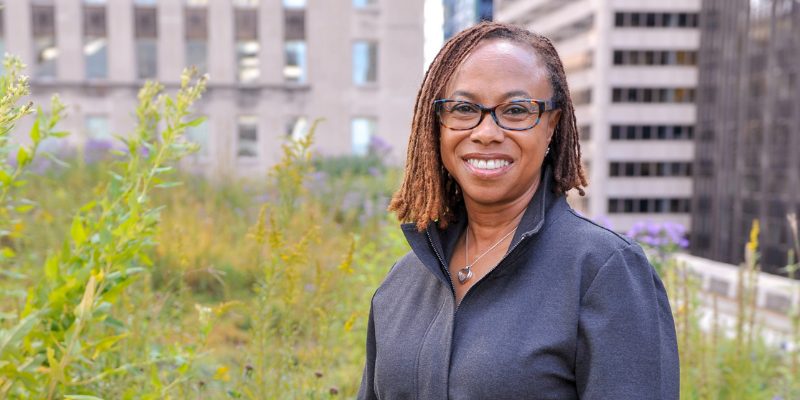By Jessica Steinhoff
When Sandra Henry shook Rahm Emanuel’s hand in 2018, she thought it was the start of a job interview. It turned out to be a job offer.
“He described his vision for the city’s chief sustainability officer and then said, ‘Do you want the job?’” she recalls, describing her chat with Chicago’s then-mayor.
When Henry tossed her hat into the ring initially for the job, the engineer turned project manager considered herself a long shot. She figured the experience might open some doors.
But when she went from managing an energy-efficiency program for an electric utility to guiding the mayor’s climate policy, doors burst open at every turn. Armed with a new level of influence, Henry seized the opportunity to be a change- maker. This meant fostering dialogues with Chicago’s most polluted neighborhoods — many of which are primarily communities of color — and have few financial resources.
A recruiter asked if she’d consider leading Slipstream, a nonprofit headquartered in Madison that aims to boost energy efficiency, reduce carbon emissions and ease the nation’s transition to renewable energy by increasing racial equity. It was a full-circle moment, as Henry had been a senior project manager for the nonprofit from 2015 to 2018. In 2022, Henry became the new president and CEO of Slipstream.
This position is especially meaningful for Henry, who, as a female engineer of color, has faced more barriers than most on her path to leadership.
“There weren’t many women of color in the energy efficiency industry when I started as an engineer. Even though I had the same qualifications and experiences, people doubted my abilities and didn’t take my suggestions or input seriously. …I built strong connections [and] relationships with the colleagues who didn’t look like me. I found the chance to demonstrate my skill sets, knowledge and abilities to help them become advocates and supporters,” she explains.
Through research, Slipstream finds ways to make existing buildings emit less carbon and prevent future struc- tures from producing it. It also partners with utilities and governments to deliver programs that meet community needs, as well as to design inclusive financing opportunities so people and businesses can scale electrification equitably.
Leading Chicago’s efforts to bring equity to climate solutions prepared Henry to chase similar goals at Slipstream. Listening to people’s needs — and generating solutions — is a key part of her work.
“Our job is to connect the dots,” says Henry. “We have to listen to the communities who experience the first and worst of climate change. What are their visions for climate resilience? How can we help make sure they have the tools they need?”
The next step is to do research and design programs that help communities achieve their needs.
“The good news is we know solutions that will reduce carbon emissions in both new and old buildings. We can lower greenhouse gas emissions, improve health and save people money,” she says. “The challenge of our generation is to bring those solutions to scale.”
Slipstream’s work in educational efforts address that challenge. One aspect of their mission is to make sure builders, designers, architects and contractors have the tools and resources they need to advocate for clean, energy-efficient solutions in their buildings.
“Education is just one piece of the clean-energy transition puzzle,” says Henry. “Our overarching goal is to listen to the community and share climate solutions that address their needs.”




